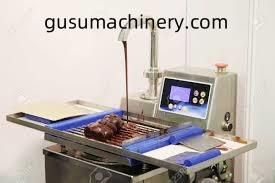Industrial vacuum collectors Essential Tools for Industrial Dust Control
Industrial vacuum collectors are specialized systems designed to remove dust and debris from industrial environments. These powerful machines are capable of handling large volumes of particulate matter, making them essential for maintaining cleanliness and safety in manufacturing facilities. The increasing adoption of industrial vacuum collectors is driven by the need for efficient dust control and compliance with health and safety regulations. As industries continue to prioritize worker safety and operational efficiency, the market for industrial vacuum collectors is expected to expand significantly.
The industrial dust collector market plays a crucial role in maintaining workplace safety, air quality, and regulatory compliance across industries. Dust collectors are used to capture, filter, and manage airborne particles generated during manufacturing, processing, and construction activities. As environmental standards tighten and awareness about worker health increases, the demand for efficient dust collection systems continues to grow globally.
Market Dynamics
The global market for industrial dust collectors is driven by rising industrialization and stringent environmental regulations. Industries such as cement, mining, pharmaceuticals, food processing, and metalworking generate large quantities of dust, which can harm both workers and equipment. Efficient dust collection systems not only improve air quality but also enhance machinery lifespan and reduce fire hazards. With industries adopting sustainable manufacturing practices, the market is witnessing growing adoption of energy-efficient and low-maintenance systems.
Technological Advancements
Technological innovation is reshaping the dust collector market. Modern systems now incorporate advanced filtration technologies such as HEPA filters, pulse jet cleaning, and baghouse systems to improve efficiency. IoT-enabled dust collectors offer real-time monitoring and predictive maintenance, minimizing downtime and operational costs. Additionally, modular and compact designs are gaining popularity for ease of installation and adaptability across various industrial environments.
Regional Insights
Asia Pacific holds the largest share of the industrial dust collector market due to the rapid pace of industrialization and urban development. North America and Europe follow closely, driven by strict occupational safety standards and environmental laws. Emerging economies in Latin America and the Middle East are also investing in advanced air filtration technologies to support sustainable industrial growth.
Challenges and Future Outlook
Despite strong market prospects, challenges such as high installation costs and maintenance requirements persist. Small and medium-sized enterprises often struggle with capital investment for large-scale systems. However, growing government support for clean technologies and increasing corporate emphasis on ESG (Environmental, Social, and Governance) compliance are fostering new opportunities for market expansion.
Conclusion
The industrial dust collector market is a cornerstone of sustainable industrial operations. As industries move toward cleaner and safer workplaces, the adoption of smart, energy-efficient dust collection systems is set to rise. The future of the market lies in technological innovation, regulatory support, and environmental responsibility, making it a vital component of the global industrial ecosystem.
FAQs
Q1: Which industries use industrial dust collectors the most?
A1: Industries such as cement, metalworking, food processing, and pharmaceuticals are major users.
Q2: What technologies are improving dust collector efficiency?
A2: IoT monitoring, pulse jet cleaning, and advanced filtration systems like HEPA filters enhance performance.
Q3: Why is the demand for dust collectors increasing?
A3: Growing environmental awareness and stringent safety regulations are driving market growth.
More Related Reports:
Portable Water Purifier Market Growth
Crushing, Screening and Mineral Processing Equipment Market Growth







